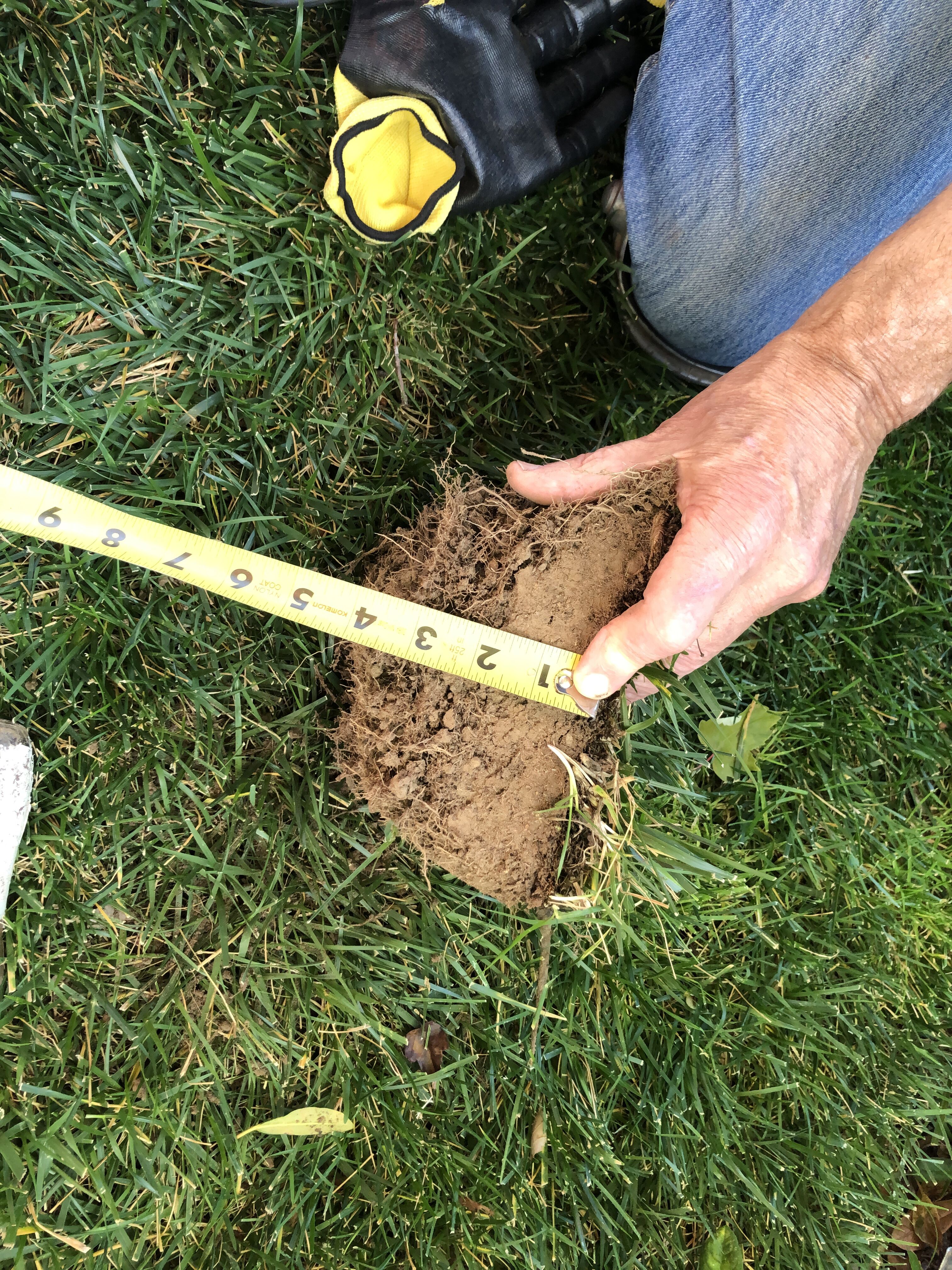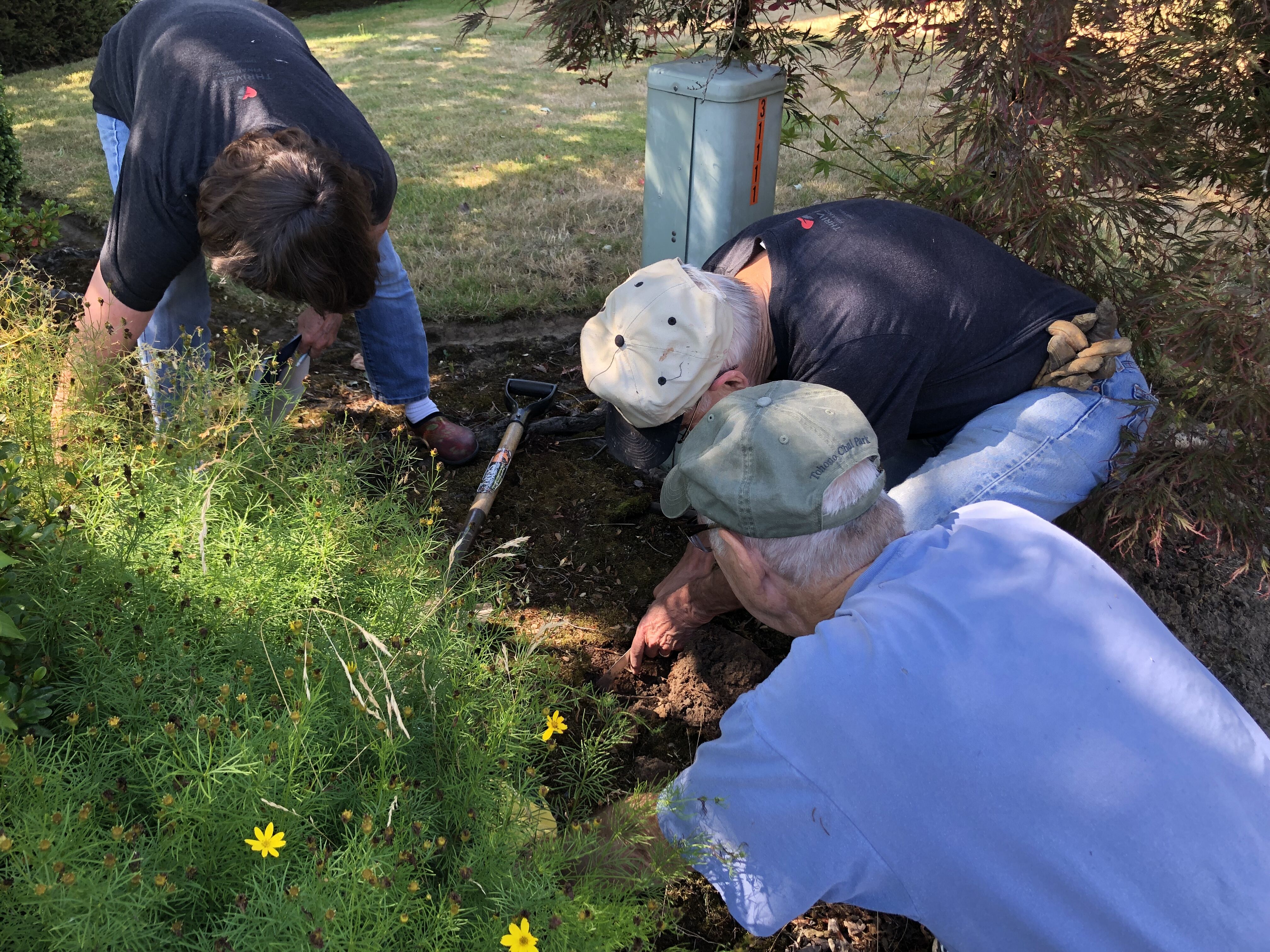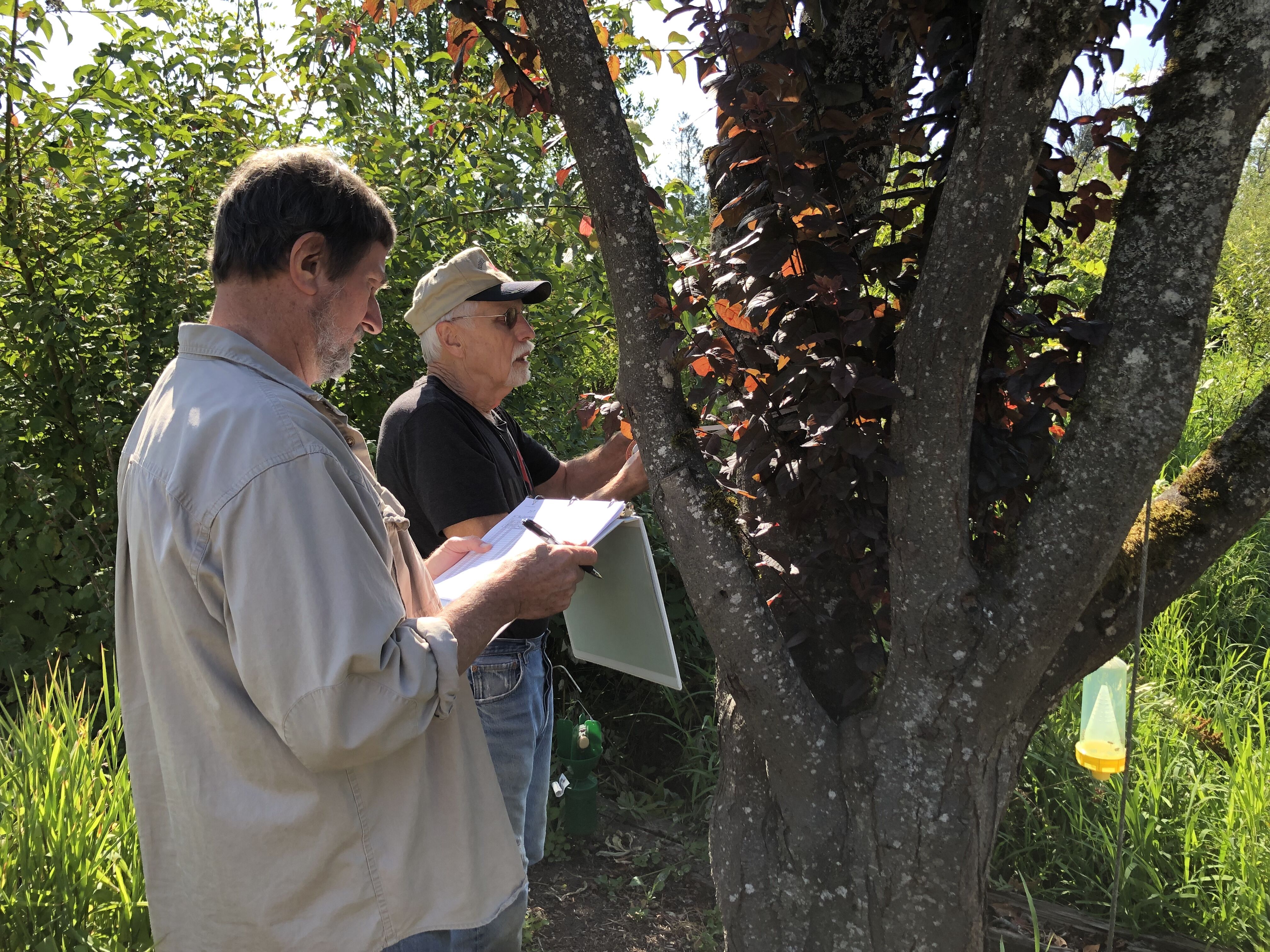
Our surveying process is ongoing. Our first survey was in the yard of Steve and Pat Christiansen. We measured the area of several mulch-covered beds to estimate the amount of carbon in the soil of those beds. The carbon in the soil is derived from the decomposition of the mulch covering that soil. That carbon is primarily contained in an organic-rich layer just below the mulch.
Next, we dug a hole in one bed to identify and measure the thickness of the organic-rich layer. We took a sample in a plastic bag of the organic-rich layer so that we can have it analyzed for organic (carbon) content.
Using the measured thickness of the organic-rich soil layer in that bed, we were able to make a good estimate of its carbon content (in pounds). We then used that estimate to further estimate the amount of carbon in the other seven of the mulch-covered beds in their yard. Our conservative estimate is at least 600 pounds of carbon in those beds.
We also measured the 24 trees on the property. Using the process documented in iTree, we estimated the carbon content of each tree. The total carbon content of all trees in the Christiansen’s yard is estimated at over 23,000 pounds (11 tons).
Extra: We have now measured the yard of Bev Briggs; we have not yet estimated the carbon content of her yard.


(Survey team: Don Nearhood, Larry Bliesner, Bev Briggs, Pat Christiansen, and Roger Sandquist; with support by Mark Ingman, Eric Luttrell and Carol Harker)
This update is from our first pilot community for the Community Carbon initiative. The objective of Community Carbon is to measure the carbon content in suburban soils and define processes to substantially increase the carbon content in those soils (carbon sequestering). Widespread application of processes to increase the carbon content of suburban soils will yield significant benefits to the homeowner in terms of improved soil, and to the community in terms of reducing carbon in our atmosphere.
Learn more about Community Carbon and sign up for the next meeting on September 21st.
To sign up to receive these blog post directly to your email account, click here or on the link in the upper right sidebar of any page at ecofaithrecovery.org.
Please feel free to share this post with others and use the field below to post your thoughts on this topic. Thanks!
